Maintaining clean and sanitized nail clippers is essential for proper nail care and hygiene. Over time, these handy tools can gather a buildup of dirt, bacteria, and even fungi, which can lead to infections. Ready to learn the best disinfecting and sterilizing techniques to keep your clippers clean and safe? Let’s dive into effective methods to ensure your clippers are always ready for use!
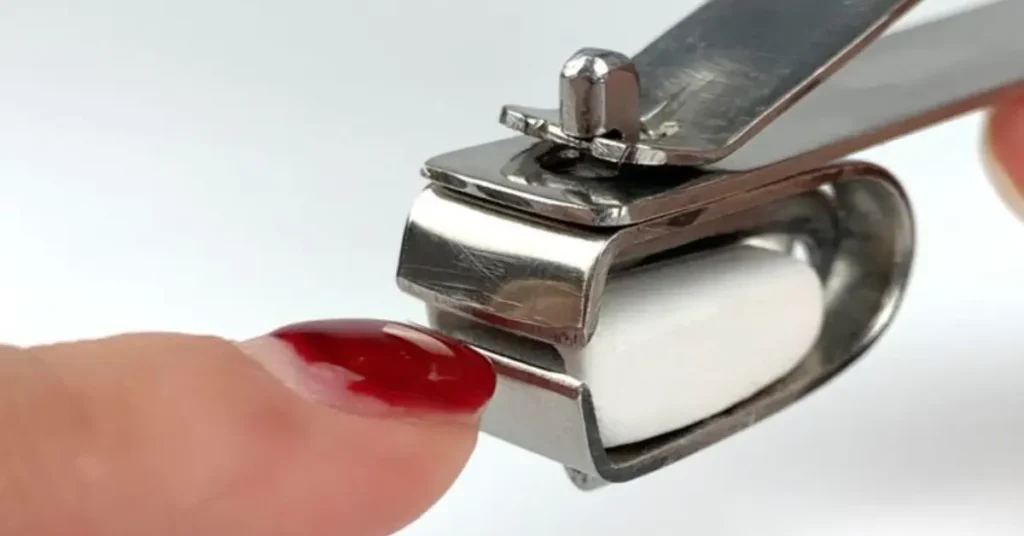
Table of Contents
Why is it important to sanitize nail clippers?
>>> Sanitize your nail clippers correctly and consistently to ensure they remain safe and ready for use.
>>> Regular clean-ups are crucial to avoid the accumulation of harmful bacteria, fungal spores, and viruses that can live on nail clippers.
>>> Disinfecting nail care tools like toenail clippers is important to prevent the spread of fungal conditions and other infections affecting both fingernails and toenails.
>>> Keeping your nail clippers sanitized helps to cover against harmful agents and ensures they remain safe to use.
>>> Following CDC recommendations for proper sanitizing techniques helps to keep bacteria and fungal spores at bay.
>>> Whether for home use or professional settings like nail salons or workrooms, sanitizing your nail clippers is customary to maintain optimal hygiene.
>>> If you have participated in sharing your nail tools with family members, it’s essential to disinfect them properly to prevent the spread of infections or fungal conditions.
Ways To Clean Nail Clippers
There are so many to disinfect or clean nail clippers, some of which are discussed below. By following these steps which are discussed below you not only disinfect nail clippers but also can increase the life span of nail clippers.
Using a Heat Sterilizer
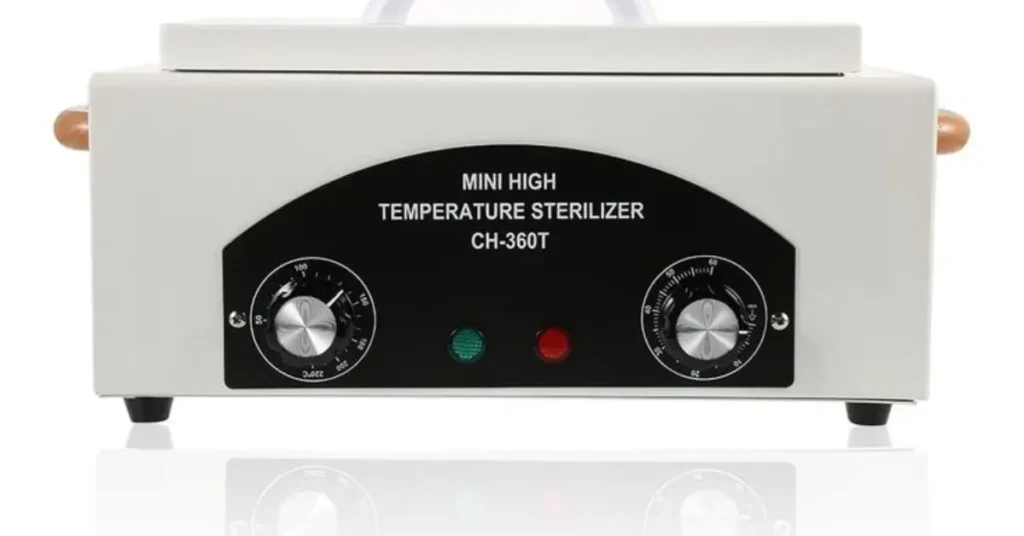
Prepare an autoclave or bead sterilizer
>>> Prepare your autoclave or bead sterilizer by following the setup directions provided with the machine.
>>> Ensure the nail clippers are placed in the sterilizer properly to ensure maximum exposure to hot temperatures.
>>> The autoclave or bead sterilizer will generate intense heat that works to kill any bacteria and microorganisms on the clippers.
>>> Allow the sterilization process to continue for the recommended time to ensure the clippers are completely sanitized.
>>> Marta Nagorska, a licensed nail technician, suggests this method for achieving the best results in nail salons.
>>> If using an oven-safe pan, bake the nail clippers at 170°C (or 340°F) for 60 minutes, but ensure no plastic parts melt during the process.
>>> Once the process is complete, your clippers are ready for use, fully sterilized and safe for future care.
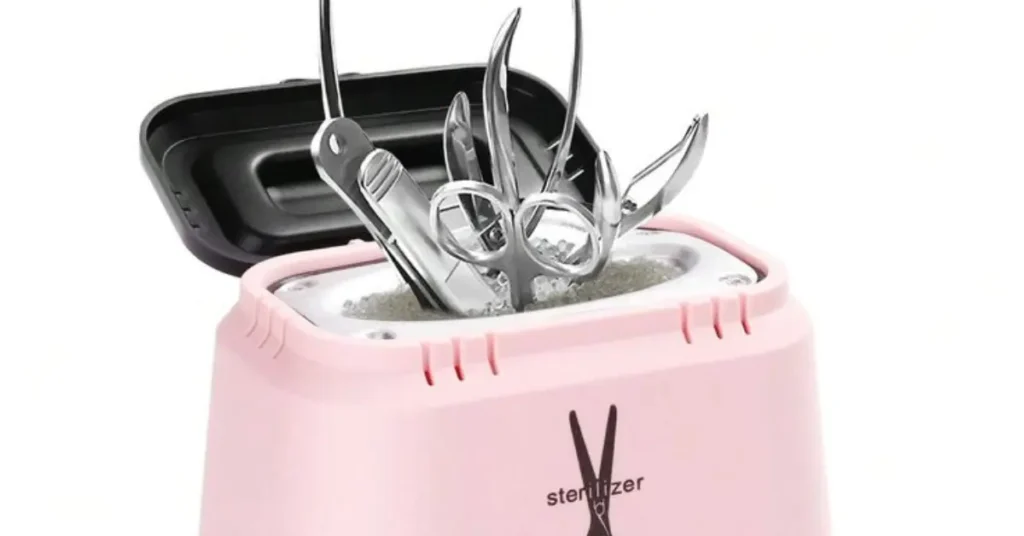
I’ve used autoclaves in professional settings, and it’s been invaluable in achieving a high level of hygiene for my tools, ensuring complete sanitization every time.
Wipe off your clippers
>>> To wipe your clippers, use a clean cloth or paper towel to wipe down the tool, ensuring you remove any tool se gunk, or buildup from the ridges and contours that could hide in these places. This step is essential for sterilizing and maintaining clean nail tools.
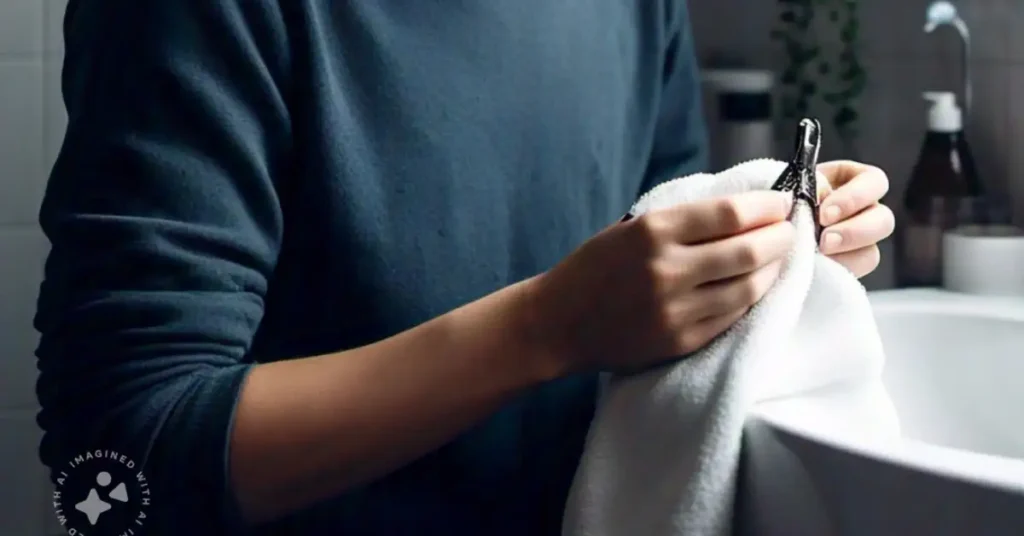
From my experience, using a clean cloth consistently helps avoid buildup, keeping the clippers in optimal condition and reducing the risk of contamination.
Sterilize your clippers in the machine
>>> To sterilize your clippers in a machine, follow the instructions of your chosen sterilizer, ensuring the correct sterilization methods and time to completely disinfect the metal tool.
>>> Set the temperature to 170°C (or 340°F) for 60 minutes, and always wear gloves or use an oven mitt when handling freshly heat-sterilized tools.
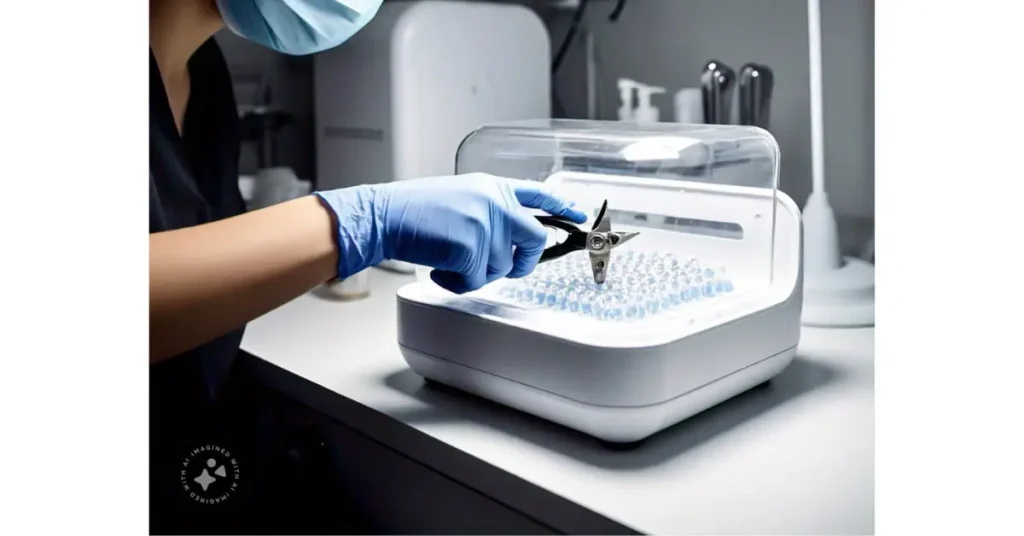
I always rely on glass beads in a bead sterilizer as it ensures the clippers are completely sterilized and ready for use without any hassle.
Soaking in alcohol
>>> Soaking your nail clippers in alcohol, such as isopropyl alcohol or hydrogen peroxide, in a small vessel ensures thorough cleanliness.
>>> You should completely cover and submerge the clippers for 10-15 minutes, allowing the chemical-grounded system to work.
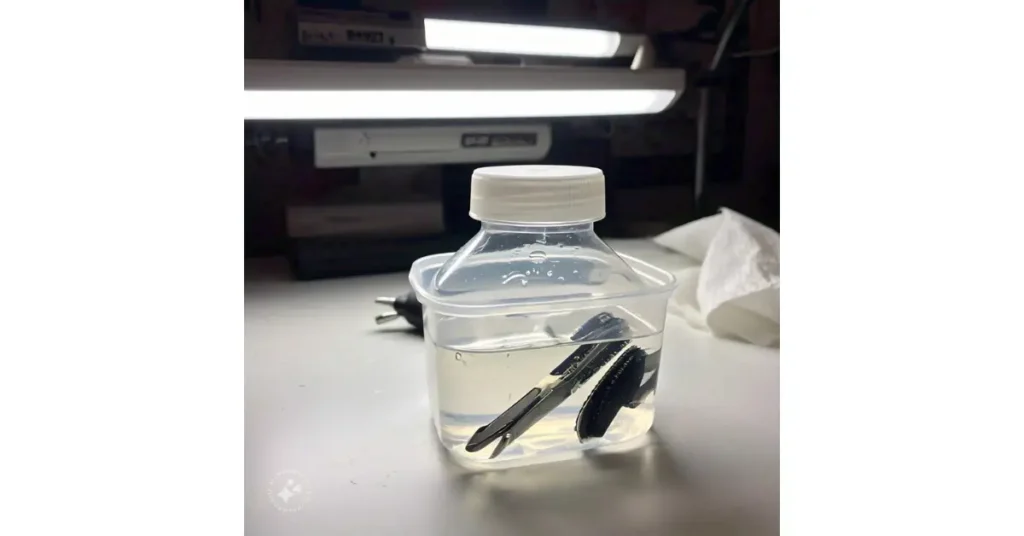
>>> After soaking, rinse the clippers with clean water to remove any residual detergent or particles, leaving the tool state-dry and safe for use. This method is pivotal in maintaining high standards of sanitation, and I’ve found it to be one of the most effective ways to ensure your tools remain in optimal condition.
Using hydrogen peroxide
>>> Soaking nail clippers in hydrogen peroxide, a powerful chemical disinfectant, helps break down germs and bacteria effectively.
>>> To use, simply soak your clippers in a shallow bowl with the solution for at least 5 minutes, then wipe them with a cloth to remove any residue, giving your tools a clean, sanitized finish.
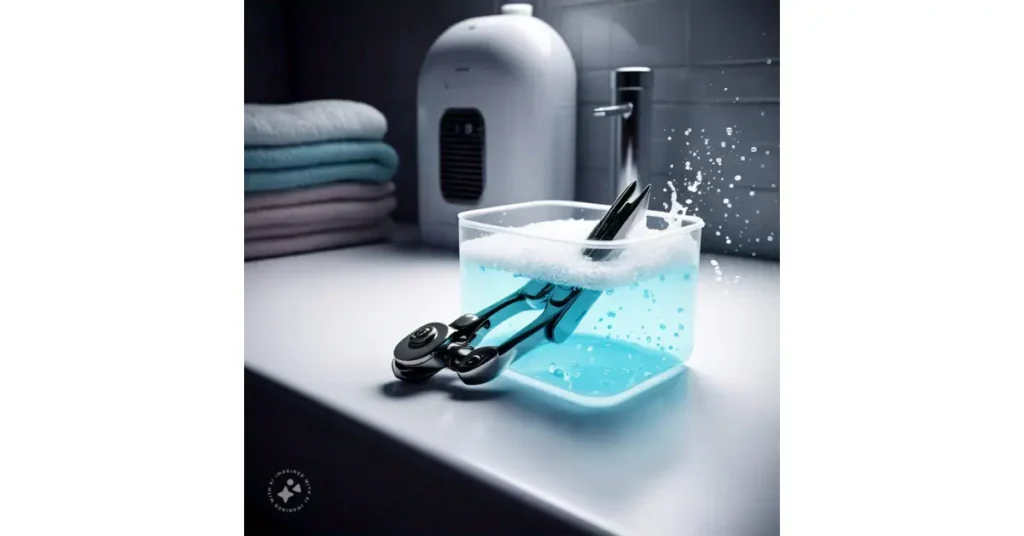
I’ve found this method incredibly useful for ensuring my nail clippers are free from harmful microbes and always ready for the next use.
Using hospital-grade disinfectant
>>> Using hospital-grade disinfectant provides advanced and clinical cleaning power for your nail clippers and nail supplies.
>>> To disinfect, immerse the clippers in the solution for at least 10 minutes, then rinse them thoroughly to ensure any leftover solution is removed.
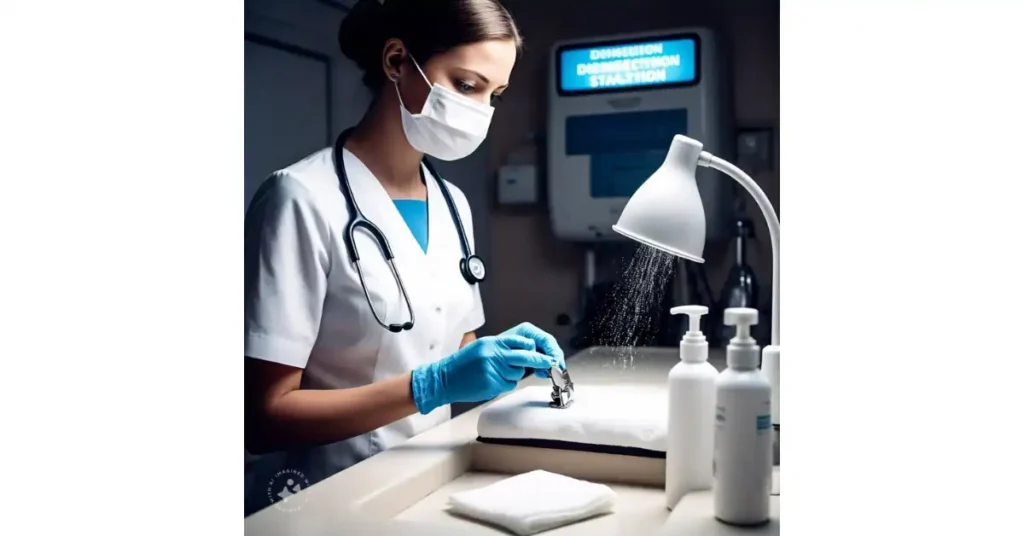
I’ve always preferred this method for achieving a higher level of cleanliness, especially when disinfecting tools are used for multiple clients in salons.
Using a UV sterilizer
>>> Using a UV sterilizer is an ultramodern and hassle-free system to disinfect nail tools like clippers, ensuring they are free from pollutants.
>>> By placing the tools inside the device and following the manufacturer’s instructions, you can effectively disinfect them in a short period, maintaining nail hygiene and promoting health.
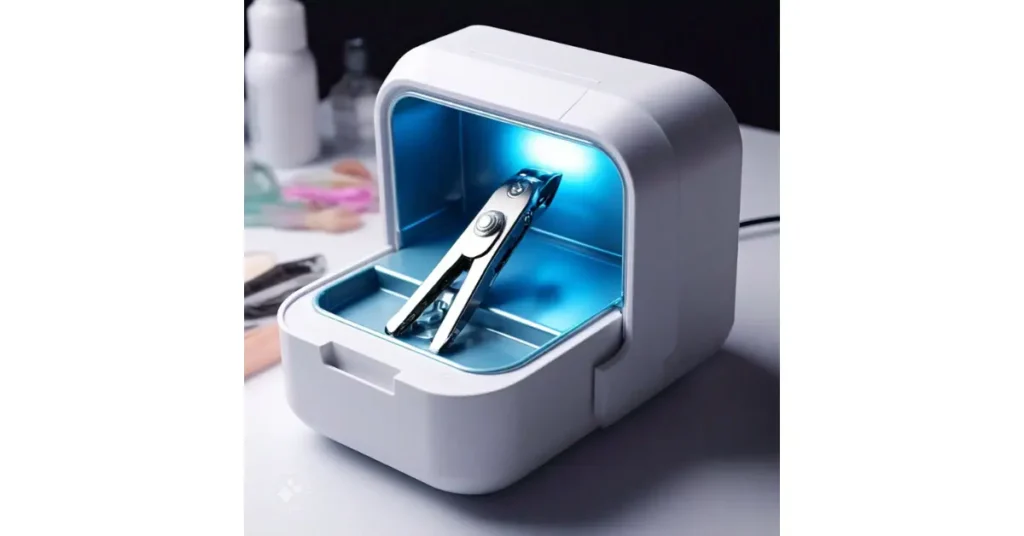
I personally recommend this method for its simplicity and the peace of mind it provides in achieving completely gutted and stainless steel tools.
Use a toothpick to remove buildup
>>> Using a toothpick is an effective way to remove small bits of dirt, grime, and buildup from clippers.
>>> Gently scrape the crevices with the pointy end to dislodge dead skin, nail clippings, and loose remnants, and then clean the tool with a dry cloth or tweezers.
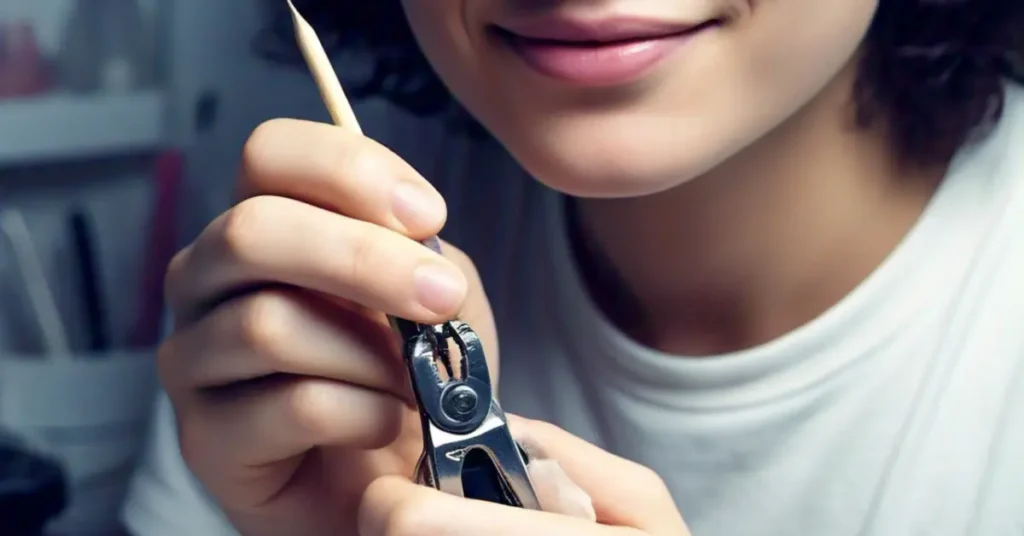
In my experience, this method works wonders for getting rid of exceptionally stubborn buildup, especially in hard-to-reach areas.
Some other ways
Sanitize your nail clippers after each use
>>> After each use, it’s important to sanitize your nail clippers to maintain hygiene and ensure the optimal state of your tools.
>>> Whether through boiling, alcohol soaking, or using a UV sterilizer, it reduces the risk of cross-contamination and spreading infections, keeping your clippers in cleanliness and ready for the next nail care session.
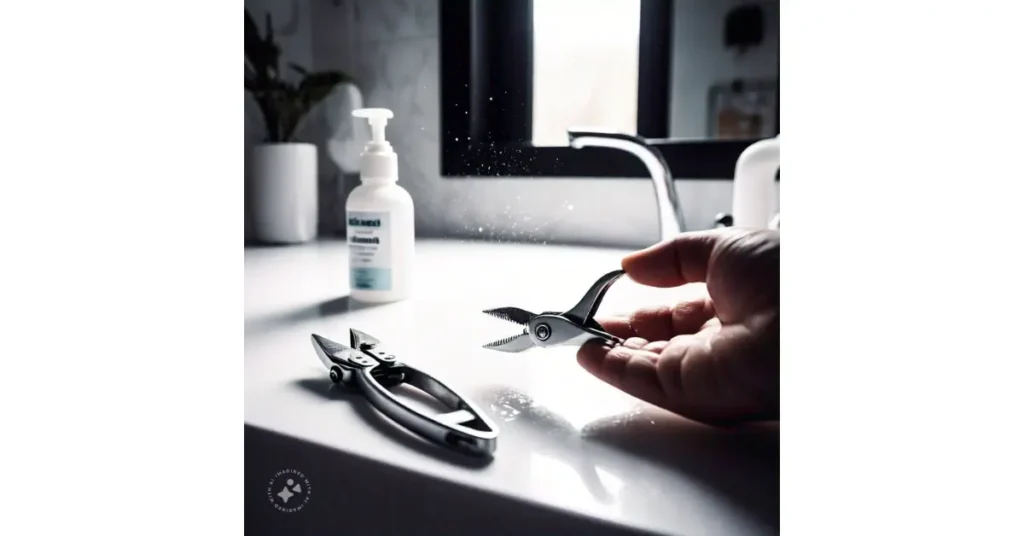
Personally, I’ve found that a consistent sanitizing routine is crucial in maintaining the loftiest position of my tools, preventing any buildup of germs.
Be extra careful when sanitizing your nail clippers
>>> When sanitizing your nail clippers, it’s crucial to pay scrupulous attention to detail, ensuring all intricate areas like the hinge and hard-to-reach spots are properly cleaned.
>>> Using a toothbrush or a similar tool can help get into the crannies and penetrate deep into the clipper, ensuring disinfection.
In my experience, taking this thorough approach really bolsters nail hygiene and makes sure my tools are always in impeccable condition for my nail care routine.
Replace your nail clippers every year
>>> Replacing your nail clippers every year is a vital part of maintaining tool hygiene and nail health.
>>> Over time, wear and tear can cause clipper blades to become dull, affecting their ability to trim nails effectively. While boiling, soaking, washing, and wiping down your clippers with rubbing alcohol can help, nothing beats the reliability of a fresh set.
>>> Regularly replacing your nail tools ensures sanitation, preventing bacteria from spreading and maintaining nail care requirements.
In my experience, replacing my clippers annually has kept my nail care routine efficient and hygienic, and I’ve noticed fewer issues with gritty tools or damage to my nails.
Conclusion
In conclusion, maintaining clean and sanitized nail clippers is crucial for both hygiene and optimal nail care. By following the various cleaning, disinfecting, and sterilizing techniques outlined, you can ensure your tools remain effective and safe for use. Regular maintenance, such as sanitizing after each use and replacing clippers annually, will help preserve their quality and prevent the spread of harmful bacteria and infections.
FAQ,s
How do you clean nail clippers?
To clean your nail clippers and cuticle pushers, first, soak them in a mix of rubbing alcohol and hydrogen peroxide, then wash them with soap and water before boiling for 30 minutes and wiping them dry.
How do you clean nail tools step by step?
Clean your manicure items by first giving them a soak in soap and water, then rinse and immerse them in 70% isopropyl alcohol disinfectant, before letting them air dry or pat dry with a single-use towel.
What is the correct way to use a nail clipper?
Always trim your fingernails straight across to reduce the chances of an ingrown toenail, and after trimming, smooth out toenails with a nail file or emery board, but leave the cuticles uncut for protection.
